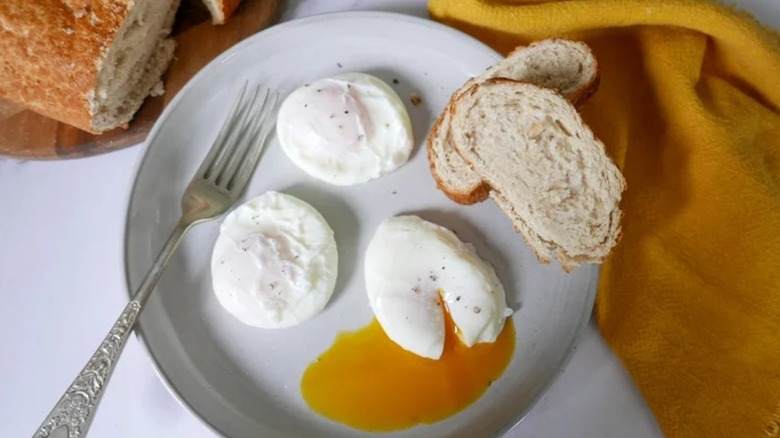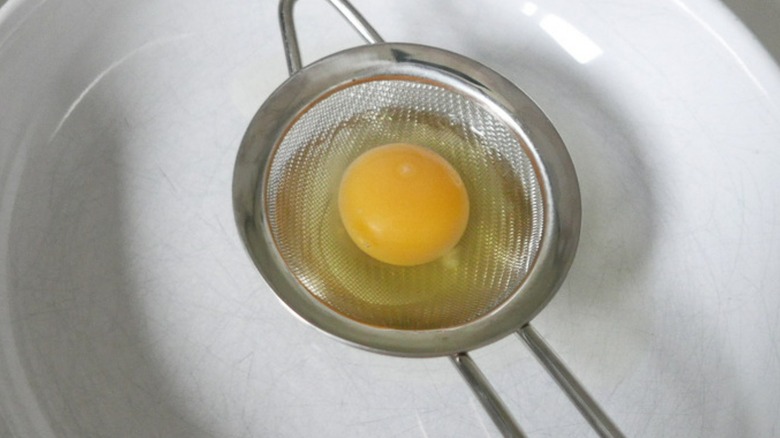The Kitchen Tool You Need For Perfect Poached Eggs
"The perfect poached egg is one of the culinary arts' greatest achievements," according to Escoffier Online. Still, opinions may differ, though, on what criteria constitute a perfectly poached egg. For example, some like poached egg yolks to ooze, while others prefer them jammy. But one thing we'd guess that most poached egg enthusiasts would agree upon is wanting their poached eggs to have a well-formed shape.
There are countless tips and tricks across the internet to help cooks create tightly formed eggs that hold their shape as opposed to loose bunches of egg tendrils that easily fall apart. Tasting Table recipe developer Ting Dalton is no exception. Dalton's fool-proof method for poaching eggs involves some old favorite tricks like a splash of vinegar accompanied by swirling the water, as well as an extra step that may make all the difference.
Now, we know how you might feel about extra steps. For example, the late Julia Child's trick for achieving the perfect poached egg works like a charm, but it also involves the extra step of parboiling the eggs in their shells. Similarly, celeb chef Jamie Oliver's plastic wrap egg poach also produces perfect poachers, but not without your being willing to accept some health risks inherent in cooking in plastic wrap. And that brings us to the beauty of Dalton's "extra step," which involves nothing more than cracking your egg over a common kitchen tool.
A fine-mesh sieve: your poached egg's secret to becoming its best self
Is there anyone out there who hasn't cracked an egg into a pot of hot water, fully expecting it to emerge as an awe-inspiring tidy little egg-white pocket containing a gooey orb of golden yolk at its center? And who amongst us has not experienced the occasional disappointment of cracking that egg and watching the egg whites separate into their component parts and spread toward the pot's perimeter — as if trying to escape? Tips and tricks to keep the egg whites in poached eggs cohesive abound. Still, we're currently of the opinion that none are as simple and straightforward as the one Tasting Table recipe developer Ting Dalton recommends — and demonstrates — for her Fool-Proof Poached Eggs Recipe.
Dalton's method involves using a small, fine-mesh sieve to "decant" her eggs before setting them in the water. Try it, and Dalton predicts you'll "find that your poached eggs will be firm and hold their shape." The sieve filters out the wateriest parts of the egg white, which is the source of much of the spreading that's working against you in your quest for the perfect poach.
Dalton also recommends using the freshest eggs you have, because as eggs age, their makeup becomes increasingly watery, which also works against your efforts to curb the spread of the white in the water.
Give it a try; once you've mastered the sieve method, next up are the 11 biggest mistakes everyone makes when poaching eggs you should work to avoid.

